Tale from the Field– Connecting BEETLES Approaches and Trauma-Informed Teaching Practices
written by James Taborda-Whitt, director of Camp Bovey, Minneapolis, Minnesota.
Camp Bovey is a traditional sleep away camp for youth who are underrepresented in green spaces. Camp Bovey staff are guided by the belief that summer camp has the potential to improve how children learn and think about themselves as learners. Although we don’t know the personal stories of every camper, we use a trauma-informed and healing-centered approach, because many of our campers have experienced toxic stress or early life trauma. Being trauma-informed means we put a lot of thought into how we set up the learning and social environments, how we conduct activities, and it’s why we’re so excited to be incorporating BEETLES strategies, BFF questions, and the learning cycle!
What had originally drawn me to Bovey was the potential to use summer camp as a way to help kids find healing through nature, but the camp was at a bit of a visionary crossroads and had just been tasked with a new priority to enhance STEM education across camp programming. I’m really interested in the correlations between school systems and learner self-efficacy, especially as it relates to language based curricula for students who process language sounds and patterns in neurodiverse ways due to reading disabilities like dyslexia, cultural reasons such as English dialect diversity in the home, or sensory processing differences. I was unsure whether STEM made sense for the population of campers, the staff typically drawn to work with our campers, or even me as a leader. I hadn’t ever had a good experience with science-y stuff myself, so I was feeling a little personally resistant.
I have to admit, I didn’t actually believe I’d find something that really fit my campers’ needs (or mine). I was aiming for a few new tools for my teaching bag of tricks. It never occurred to me that BEETLES might offer the full package I needed, and I definitely never thought I’d find something via “science” that would revolutionize my own self-concept or completely change my leadership style for the better; I found all of that with BEETLES.
Some background from James on trauma-informed care and education
Teaching youth and employing young adults with trauma backgrounds sometimes feels a bit like gymnastics—it takes a lot of emotional agility, personal style flexibility, adaptability, and sustained commitment to learning new things. In the Trauma-Informed Care world, we believe that this approach is what should happen across all systems (educational, nonprofit, and corporate) because it’s far more person-centered, i.e. it doesn’t assume that a single way of teaching/leading works for everyone in the same way. It promotes thoughtful empathy by teaching that behaviors, needs, and emotional responses are just the tip of the iceberg, so to speak. Trauma-Informed Care posits that what society sees in a person’s actions and responses is deeply rooted in the previous experiences they have had, and some people might have had experiences that impact how their brains developed (either via trauma or due to toxic stress).
Trauma and toxic stress work in similar ways at neurological and nervous system levels, but the difference between trauma and toxic stress is that toxic stress is ongoing and unalleviated over time (like poverty, racism, or severe learning disabilities), and trauma can happen through a one-time event. It’s idiosyncratic—it is unique to each person. Even people who experience the exact same situation (e.g. two survivors of a car wreck, or two children who grew up in the same abusive home) may be impacted differently. Trauma doesn’t have to be an ongoing event and it is not confined by class or race boundaries. Trauma is something that anyone can experience. The level of its impact on an individual’s brain development relies heavily on two components: (1) When (in a person’s brain development) the trauma occurred, and (2) How or whether the person had the support systems to release (or work out) the trauma.
As educators and team leaders, it’s important to know that when it comes to emotional responses, uncertainty, or new situations (including learning new tasks), toxic stress and trauma work a little bit like a magnifying glass. A new experience in a new setting might be exciting for lots of folks, but for a person whose brain has been impacted by toxic stress/trauma, all the emotions associated with newness and uncertainty may result in a really big, magnified behavioral or emotional response. When we see big reactions to seemingly small things but don’t remember the brain-behavior connection, the behavior can easily be cast off as “bad”, “interruptive”, or even “apathetic.”
Both toxic stress and trauma impact the developing brain at a neurobiological level which impacts emotional responses, behaviors, empathy, and short term memory by impairing the developmental complexity of a region of the brain called the prefrontal cortex. Adverse Childhood Experiences, systemic racism, family violence, high mobility/homelessness, or parental mental illness, change the way the brain develops. It makes typical childhood tasks like staying in line, listening to someone else’s opinion, taking turns responding, or having self-control a very different sort of challenge for some kids. Although trauma or toxic stress can occur at any point in a person’s life, it has the longest term impact when it occurs during early childhood (the first few weeks in utero up to age 5.) Our campers come to us long after the early childhood years, but it doesn’t mean the impact of those early life experiences disappears. It just means that we have an extra special responsibility to provide the richest possible experiences through curricula and programs that are suitable for people who might not have the longest attention spans or the same ability to sit perfectly still and quietly as we conduct a lesson.
The good news is that our brains are incredibly resilient and continue to change and develop throughout life through a process called neuroplasticity. The ‘decider’ or the ‘coach’ part of our brain—the part that helps us take a second breath before reacting, listen when instructions are given, or empathize with a friend or stranger—is the very part of the brain that grows after we’re born through the types of experiences we have throughout the first few decades of life. The more connections youth have with caring adults and prosocial interactions with peers, the more connections a person gets to sensory learning opportunities, the more sequenced the exposure to sounds and patterns, and the more practice and experience receiving and giving empathy or tuning into one’s emotions—the richer the experience, the more complex the brain develops!
What better space and medium for providing quality experiences that help the brain heal from trauma and toxic stress than through nature-based learning! But just being in nature won’t do it on its own, and this was my greatest takeaway from the BEETLES Institute: taking people into nature is insufficient; caring adults have to teach them how to think in nature. The BEETLES strategies help educators teach the art of thinking in nature and I believe this is the strongest connection between the BEETLES and Trauma-Informed program practices. Sequenced and scaffolded strategies allow for educators to facilitate learning moments that go far beyond environmental literacy and move into the realm of strengthening a child’s cognitive infrastructure necessary for growing into a caring, empathetic, critically engaged member of society.
With the BFF (Best Friends Forever) Questions and INIWIRMO (I Notice, I Wonder, It Reminds Me Of) routine, I’ve gained patience with a purpose. Patience is mandatory in every educator’s daily life, but when working with youth who process information and experiences in neurodiverse ways, patience becomes the #1 priority. However, patience without intention or purpose won’t lead to engagement.
It’s never been a problem for me to handle the loudest of groups, the most panicked canoe crew, or the wildest of kid scenarios with patience—but my ability to not get flustered was insufficient. I lacked the dual ability to remain unflustered and hit that sweet spot of learner engagement—not just interest—but deep engagement that gets to the soul of a person where they become so engaged with the situation that the learning about the topic shifts just enough so that what they’re really learning is something about themselves.
The BFF questions slow me down and give me direction in the midst of my patience to still keep the learning objective focused on the learner. The BFF question strategies align with trauma-informed teaching practices because their goal is to slow down the learner, help the learner think backwards across the steps they took to get to where they are now, and to name out loud some of what helped them get there. These are all really important steps that are helpful for a person who’s experienced trauma! Breaking down the immensity of an emotion into parts that can be named, or thinking backward moment by moment that preceded the emotion to name what was happening, helps a person calm down.
I Notice, I Wonder, It Reminds Me Of (INIWIRMO)
Beyond nature study, this activity has been so useful in both staff training and working with campers because it provides a thought pattern and analytical strategies that really work for making introspective observations (about emotions and feelings). For example, naming the emotion aloud and linking it to a physical sensation helps a person come to control the emotion: “I notice my stomach is hurting. I wonder if it’s because I’m hungry. I remember another time my stomach hurt and it was when I was in a new place about to do something new. I might be hungry, but I’m also about to do something I’ve never tried before. I am feeling nervous.” Sequencing the steps using the INIWIRMO strategies help hone in on a particular component and it makes for a memorable strategy that someone feeling the intensity of emotions can recall later. Using the INIWIRMO steps in these sorts of introspective settings with others has helped me slow down my pace and really make time to strengthen healthy habits rather than just rushing past the person’s emotions.
INIWIRMO has also been incredibly helpful in coaching others to develop empathetic understanding of others. Times when I’ve had a lot of success implementing the strategies from the INIWIRMO routine have been when a person (including staff members!) is very angry about something they experienced. We use INIWIRMO to get into the sensation within their body, critically think through the other person’s perspective, and name the different emotions. In addition to introspection, INIWIRMO helps coach a person to noticing the actions, facial expressions, and body language of the person who upset them, then wonder about what could have caused those, then imagining oneself in the position of the other person by remembering a time they acted in a similar way. What was it that caused them to have that same facial expression? Can they connect to how that person acted by thinking about a time they acted similarly? Before attending BEETLES, I spent lots of time with upset youth trying to help them see someone else’s side of a situation, but I was never able to coach that skill with such logical sequencing before.
Here are some examples and adaptation tips regarding BEETLES suitability for groups like those I work with, i.e., a lot of energy (often anxious energy), limited previous exposure to nature, mostly negative prior exposure to schools or learning settings, and/or they process sensory information in neurodiverse ways:
- Activity timing. The timing of the BEETLES activities actually works for our learners!
- Group sizes need to be small (we’ve found that more than 8 is too many).
- Short introductions. The most difficult area for our team has been getting learners into ‘participation’ mode and through the introduction. We’ve found it’s incredibly important to keep our introductions quick and efficient–really cutting out excess dialogue. The quicker we can get to the exploration portion of the learning cycle, the better.
- Walk & Talk for kids ages 12+. We commonly start with the Walk & Talk routine, we limit it to a max of 4 rotations, we really emphasize the greeting and thank you/goodbye before shifting, and we scaffold the questions really carefully, starting with introspective questions first.
- Starting with circle game for kids under 11. We haven’t as had much success with Walk & Talk in this age range (yet), so we’ve started our activities with a quick circle game (our favorite is Ninja). Ninja helps us move our learners from an unstructured, disengaged gaggle, into the physical setting we need for the activity, which is typically a circle. It also helps reinforce some participant actions, like turn taking, and being aware of other learners in the group. Using the quick game minimizes the amount of time spent corralling bodies, it reinforces the 3 participant elements we need: everyone participating, watching/listening to others, taking turns exchanging ideas, and it lets nervous kids work out some of that anxious energy they might be feeling. (You can find lots of other quick, inclusive circle activities at Responsive Classroom’s website!)
- Group norms, when introduced at the right time, help all have buy-in. I wait to propose a group norm (such as using the sign language hand sign for “me too”) until we are later in the activity and one of the participants contributes something I know is relevant to others. By waiting to add the norm then, the participants have been more likely to remember it and utilize it. When I’ve offered these at the beginning of the activity, the information hasn’t sunk in as well. I’ve found it’s really important for me to be patient and wait for the right timing to introduce that norm, even if it means there’s a lot of side talk in the beginning. It doesn’t mean a group isn’t learning or participating if they’re being loud. It just means the activity facilitator needs to move more quickly to get to an exploration portion.
- The Learning Cycle provides autonomy for the learners and introduces autonomy at the right time. In both my staff training and in other activities (like teaching canoeing or leading a group through the team challenge course), the learning cycle steps, when followed in order with more time invested in exploration than anything else, yield personal buy-in and all group engagement! Something I’ve learned as an educator is to be patient about the time in which learners start to really learn. It varies from group to group, but the most rewarding moments of seeing someone ‘get it’ have come long after I introduced a topic where I’ve waited for the learner themselves to put together the pieces and verbalize their understanding after a lot of time for them to explore independently. Having the learning cycle helps me patient with a purpose here, too!
I have so much hope about our camp’s ability to ‘get better at getting better’ with our implementation of the learning cycle across all our programming and using the BFF questions and INIWIRMO routine to help build social reasoning skills in our campers and among staff.
On a personal note, my relationship with the notion of “science” has completely changed. The freedom to shift my perspective on “science” from a realm of study only the really smartest people can handle to a more in tune way of listening to others, sharing ideas, and being willing to test new ideas has given me a new lens through which to view staff hiring, staff training, program design, and even my own abilities! After getting that special experience at BEETLES of being taught how to think in nature, it was a lot more than parts of nature I started to notice—thinking in nature helped me begin thinking about myself differently, too! The guide on the side style and non-evaluative language promoted through BEETLES helped me learn more about how I learn—and once a person can figure out how they learn, it sets them free to learn all sorts of new stuff they never thought possible! (In fact, I left BEETLES and started learning the cello—I learned how I learned through BEETLES, so what better new thing to try to learn!)
James has experience working in school systems, and participated in a fellowship with the University of Minnesota LEND program (Leadership Education in Neurodevelopmental Disabilities). LEND is a national program through the Bureau of Maternal and Child Health that partners with faculty in Child Psychology, Neurobiology, and Disability Policy. Fellows get to study neurodevelopment at the graduate level while also actively participating in communities impacted by disability. James says:
“Through LEND, I got to do clinical rotations with the UMN Autism Spectrum Disorder and Neurodevelopmental Disability Clinic, collaborate with Jennifer Hall-Lande of the MN Act Early Campaign, advocate for equitable educational policies for children with dyslexia, and provide community education about developmental milestones. The process helped me learn much more about how something like a learning disability intersected by poverty, for instance, complicates a learner’s experience in learning settings. Most importantly, though, it allowed me to bridge research with my own practice and get more involved in helping others do the same.”

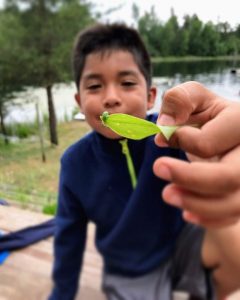

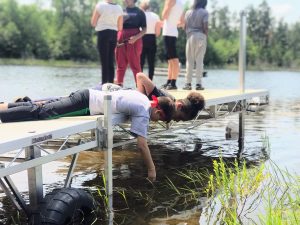
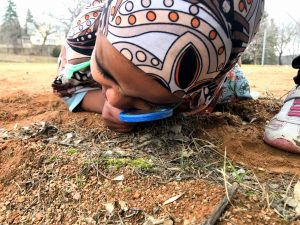
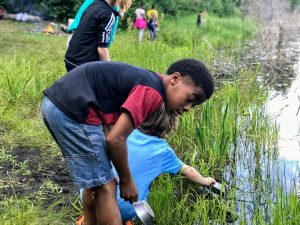

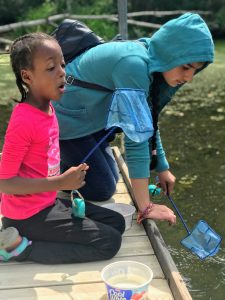

Leave a Response